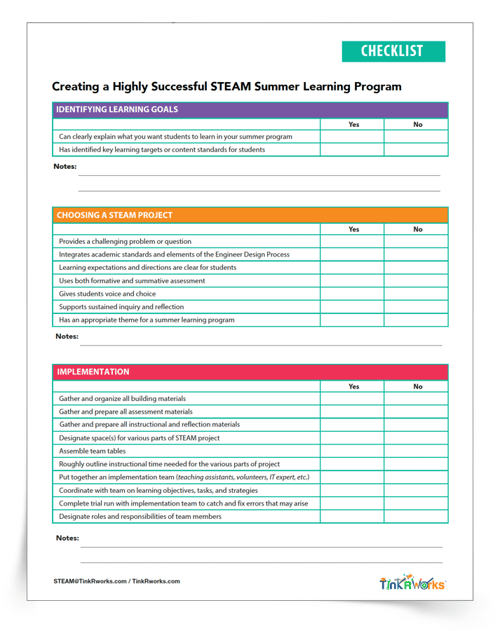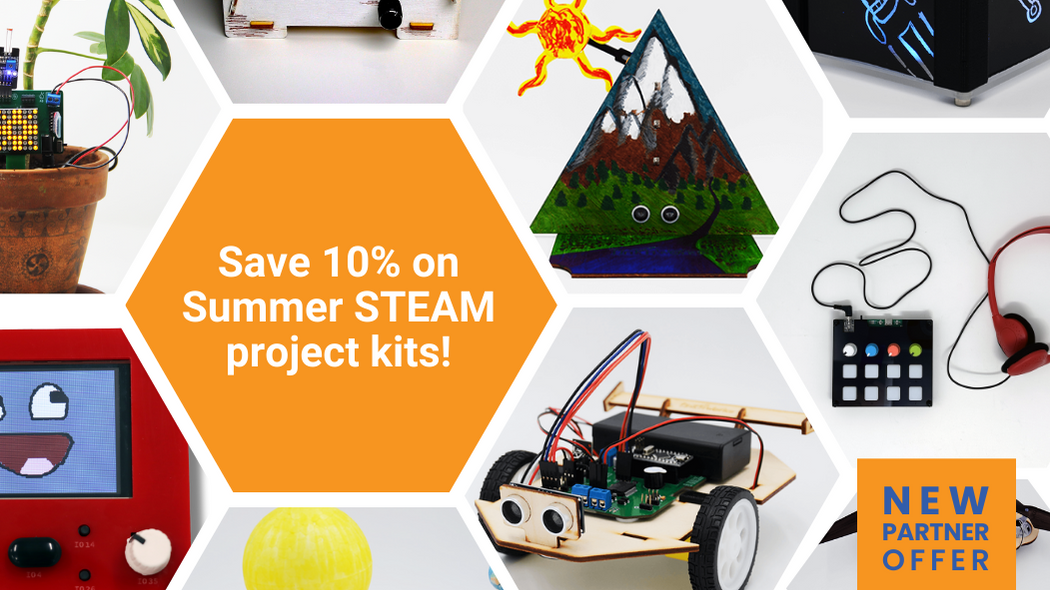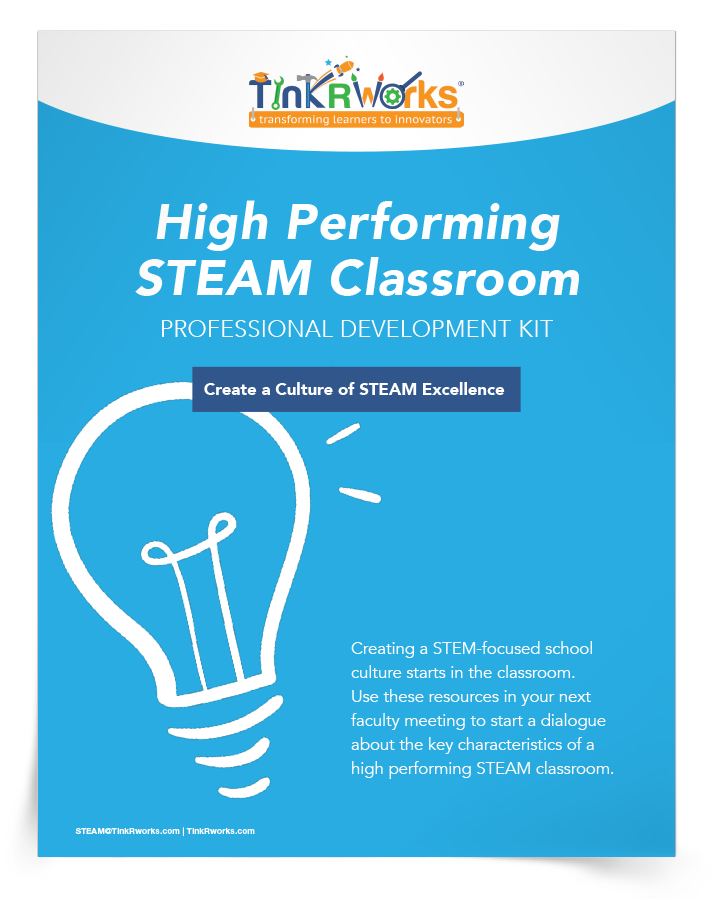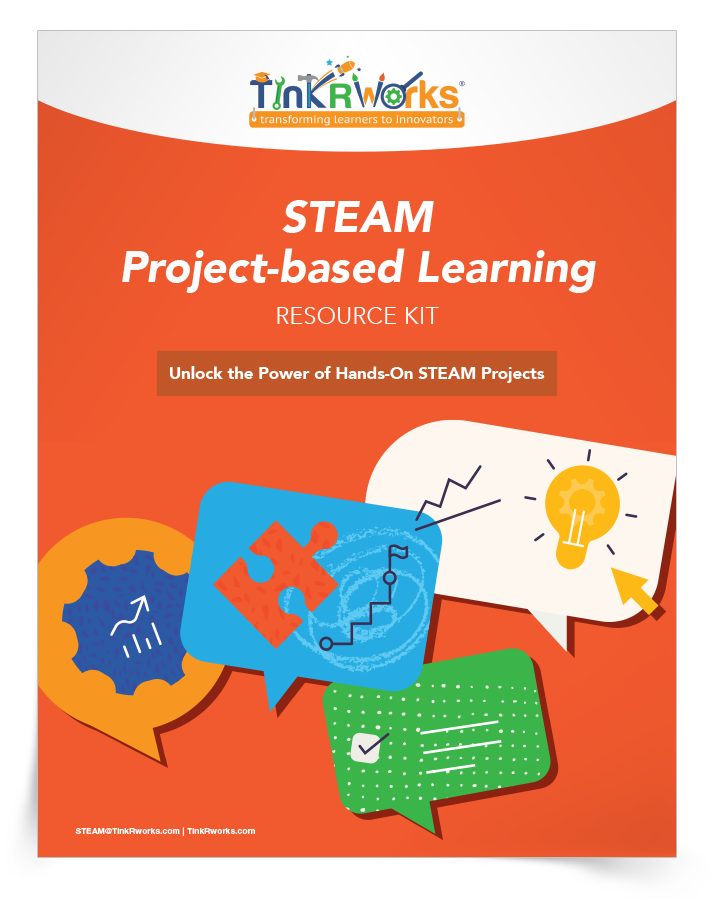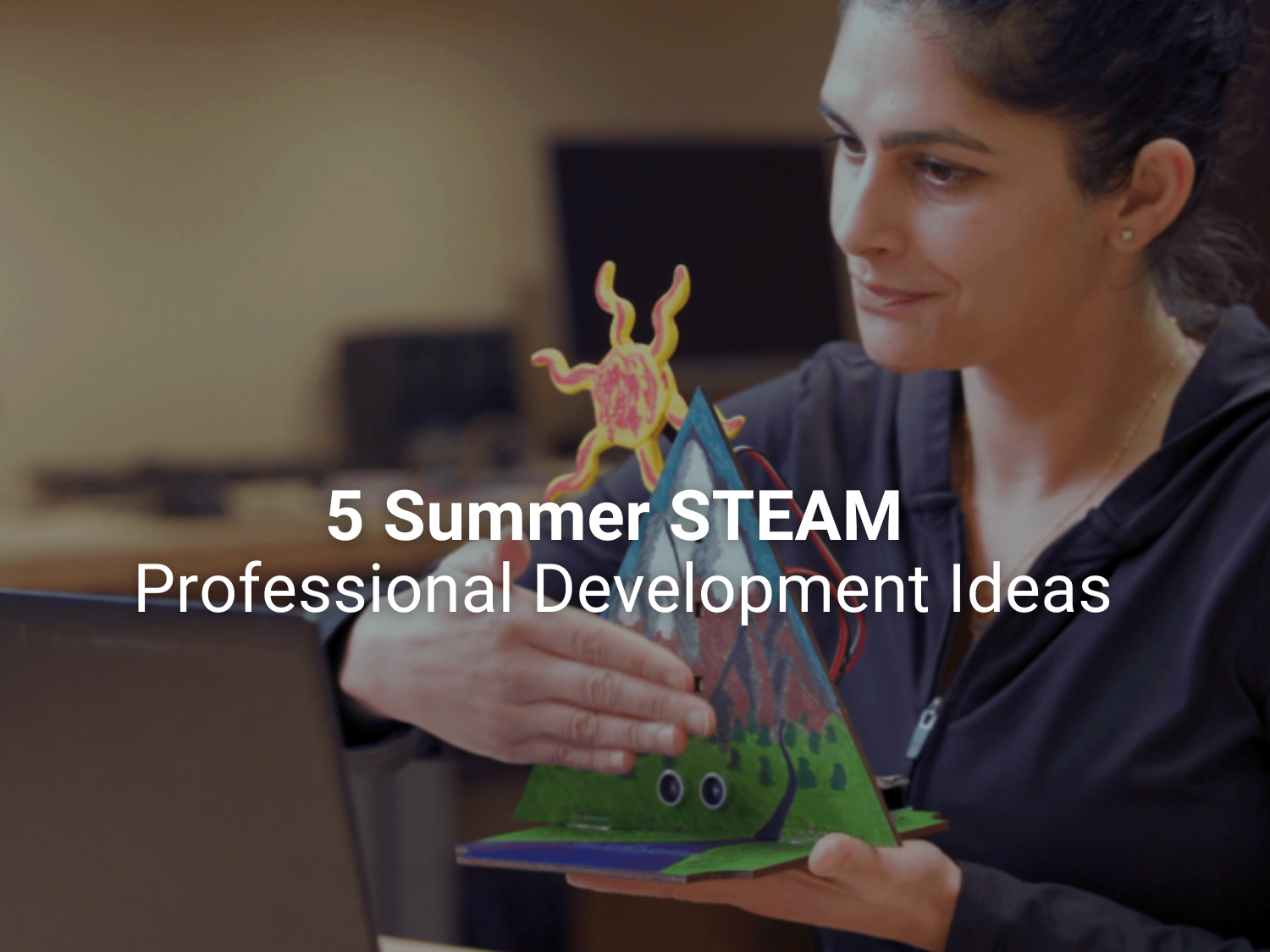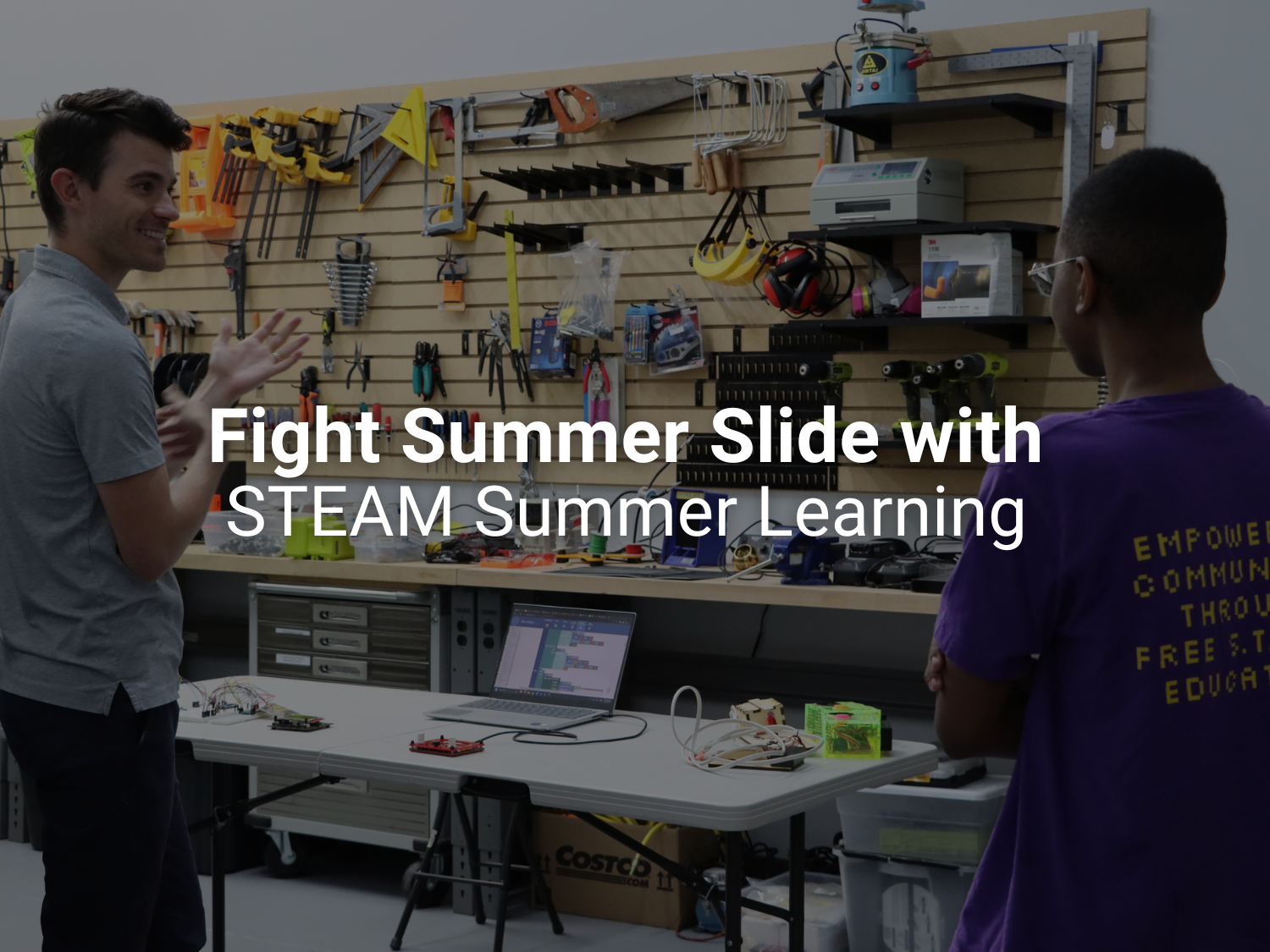Successful Summer STEAM: A Guide to Designing a Top-Notch Summer Program
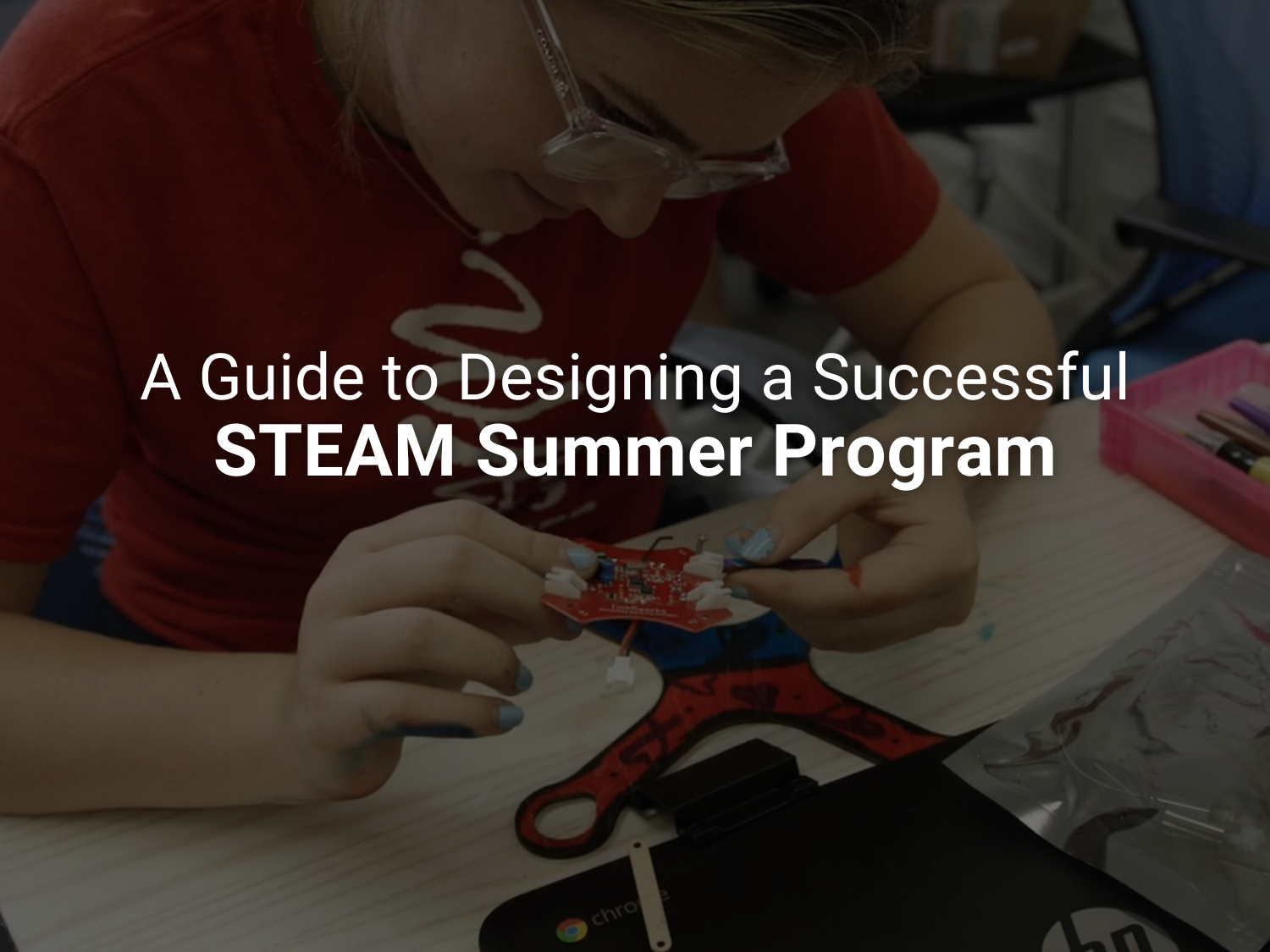
In 2023, over 70% of public K-12 schools offered at least one educational summer program for students (source). Is your school in the majority, or in the minority that have yet to utilize the summer break to introduce supplementary learning opportunities?
Leverage the potential of summer school to introduce a dynamic STEAM (Science, Technology, Engineering, Art, and Math) curriculum! This article delves into strategies for developing enriching project-based summer experiences through a STEAM-focused learning program. We also share a variety of tips and ideas to ensure your STEAM summer camp or STEAM summer learning program is engaging to students at a variety of grade levels. Plus, download a free Creating a Highly Successful STEAM PBL Program Checklist to guide you through the process.
STEAM + Summer School = A Perfect Fit
STEAM education continues to grow in popularity (and for good reason!). Increased procedural fluency, sharpening of collaborative skills, deepening of critical thinking, development of a growth mindset, rich content knowledge that students retain for the long-haul, and on and on–schools across the nation are experiencing the incredible benefits of a STEAM-centered curriculum. Studies also show that hands-on learning is a great way to support students who need more opportunities for academic development. It is for those reasons and more that educators are finding ways to incorporate STEAM lessons in creative and innovative ways.
Despite knowing the benefits, however, many schools struggle with finding the right instructional time during which to implement STEAM units. Teachers and administrators alike are left wondering how they can fully realize the benefits of STEAM Project-based Learning within the confines of a traditional school day.
Fortunately, the summer break provides ample time to introduce students to the excitement of STEAM education through Project-based Learning. Taking the unscheduled and unstructured time and creating an outline of projects that teach a variety of STEAM concepts is the first step toward creating a STEAM-focused culture within your school. The payoff will be evident for your students, their parents, teachers, and administrators alike!
The Benefits of Summer STEAM
At TinkRworks, we LOVE a STEAM summer program, and here’s why:
- There’s a low buy-in
- It can be intimidating to kick start a whole new curriculum! Integrating STEAM into your summer program allows you to focus on a single project (like our incredible TinkRworks ones) before adopting an entire year-long curriculum
- It gives schools an opportunity to train educators on how to teach STEAM lessons outside of the busy school year
- It provides students with enrichment and deepens the impact of core instruction through hands-on, experiential learning
- It’s fun! Nothing better than an engaging project-based curriculum to get students excited about learning during the summer months
- It ends up feeling more like a STEAM enrichment camp than summer school
Ready to jumpstart a STEAM summer learning program at your school but not sure where to start? Check out our Creating a Highly Successful STEAM PBL Program Checklist.
Important Elements of a Summer School STEAM Program
You understand how building out a Summer enrichment STEAM program will help your students. Now what? The next components in your high-performing program are listed below.
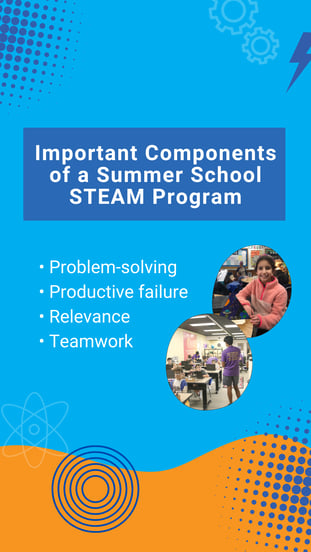
Problem-solving
- Encouraging students to approach and solve real-world problems sets them up for success throughout their academic and professional futures. A good STEAM program invites students to apply their knowledge to issues in the real world in order to find solutions. Providing genuine applications for the skills and knowledge that your students gain creates a lasting education.
Productive failure
- Does your program use failure as a jumping off point for further hands-on learning? The goal of a STEAM project is not to succeed on the first try, it’s to learn and grow while working toward success. Emphasizing this to students helps ensure that your STEAM program benefits them once the projects are complete.
Relevance
- Making the projects relevant to the season, climate, or geographic location in which your school resides helps students connect with the concepts. In the summertime, you can focus on projects that can be completed outdoors, in water, sunshine, or heat.
- For example, you can challenge students to create an ice mold that holds 5 ounces of water. Have students 3D print their ice molds in the shape that they think will melt the slowest. Freeze water in each of the molds. Then, take the ice outside and see which shapes melt the fastest and which hold on the longest. You can redo the experiment by freezing different types of liquids. Who doesn’t love learning from popsicles?
- Projects like these remind students that it’s summertime, and learning can be a fun part of the break!
Teamwork
- Last but certainly not least, a good STEAM program should promote teamwork. Afterall, one of the best things about a summer STEAM program is that it provides students an opportunity to socialize with one another during the summer break, when they normally have less interaction with their peers. Group projects that allow students to approach problem-solving in a collaborative way not only help students engage their social skills, but they also give students the opportunity to learn concepts from one another (as opposed to only learning from a teacher). This creates a more engaging and fun environment for STEAM learning!
How to Implement a Highly Successful STEAM PBL Program
If you’re ready to try out a summer STEAM PBL program at your school, you’ll want to make sure you’ve got some systems in place to help your teachers and school find success.
STEP 1: Identify Your Learning Goal
- What do you want students to learn in your summer program? What key learning targets or content standards do you want them to hit? Once you know the answer to these questions, you can then decide upon the appropriate type of STEAM project or projects for your students.
STEP 2: Choose a STEAM Project
- While there are many options out there, we’re particularly proud of the projects we’ve created here at TinkRworks! Our customizable STEAM program is the perfect fit for any K-8 afterschool enrichment program — including summer school and summer camp. Why TinkRworks?
- Our STEAM projects are educational, innovative & FUN!
- TinkRworks can be adapted to fit any class size, time-frame, and budget.
- You don't have to be a STEM expert or coding whiz to teach our projects — we provide the training and support.
Order today & save 10% on all projects through the end of the school year!
STEP 3: Provide Professional Development
- Kicking off STEAM learning with TinkRworks is as easy as ABC. Facilitators of a summer program do not need to be STEM or coding experts. Instructions are simple and straightforward. Plus, we provide all the resources needed for a successful summer program. For some more help getting started, check out our professional development kits below or talk to a teacher to learn how to add TinkRworks to your summer enrichment plans!
STEP 4: Launch, Teach, Collaborate, and Celebrate
- A TinkRworks project fits perfectly into summer school. Whatever your summer schedule, our projects adapt to your program length so it’s easy for educators to fit TinkRworks into their unique summer school plan.
STEP 5: Establish a STEAM Culture in Your School
- Leverage your STEAM summer experience. Find opportunities for summer school students to share what they’ve learned with their classmates during the school year.
- Develop a STEAM showcase to help build an environment where students want to think and act like scientists, engineers, and innovators all year long.
- Launch a STEM Club after school during the school year.
- Use our STEAM Superheroes Classroom Kit to get your students thinking like STEAM engineers!
In Summary
Knowing how and when to implement STEAM can be tricky. Integrating STEAM projects into your summer learning program is a great way to experience the incredible benefits of STEAM and revitalize your summer enrichment time! For some extra guidance on how to kickstart your summer STEAM program, check out our latest download, Creating a Highly Successful STEAM PBL Program Checklist.
-1.png?width=350&height=89&name=TinkRworks%20Logo_Learners%20to%20Innovators%20V2%20(1)-1.png)
